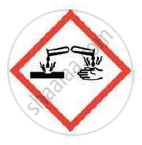Advertisements
Advertisements
प्रश्न
Answer the question.
Which different methods are used for transportation of patients? Why?
उत्तर
In emergency condition, different methods are used for transportation of patients. The methods to be adopted depends on the condition of the patient. Following are the various condition to be adopted while transporting patients:
- Cradle method: useful for children and under-weight victims
- Carrying piggy back: useful for carrying patients who are unconscious
- Carrying on two hands chair: useful for those patients who cannot use their hands but can hold their body upright
- Pulling or lifting method: useful for carrying an unconscious patient through a short distance
- Carrying on four-hand chair: useful when support is needed for the part below the waist
APPEARS IN
संबंधित प्रश्न
Name the disease for which the following types of vaccines are given:
BCG
Fill in the blank:
Uremia is caused due to the malfunctioning of...............
Define the following:
Atherosclerosis
Write, in brief, about the following:
First-aid measures in case of cuts, burns, bites and stings.
Give differences between the following:
First degree burn and second degree burn.
Write what the sign indicate.
Write what the sign indicate.
Name the Following: A substance which when injected into our body protects us against future infection.
Name any three non-communicable diseases.
Give Technical Terms: What does B.C.G. stand for?
Give Technical Terms: Proteins produced in the blood to fight and destroy harmful microbes
Give Technical Terms: The antibodies which are capable of interacting with corresponding toxins and neutralizing them.
Give Technical Terms: Name the antibiotic that was discovered first.
A viral disease totally eradicated through mass immunization.
Foreign substances which elicit the formation of antibodies are called:
What first aid will you provide in the following situation?
Burns/scalds
Assertion (A): We must offer first aid to a bleeding person.
Reason (R): We must not use gloves while helping them.
